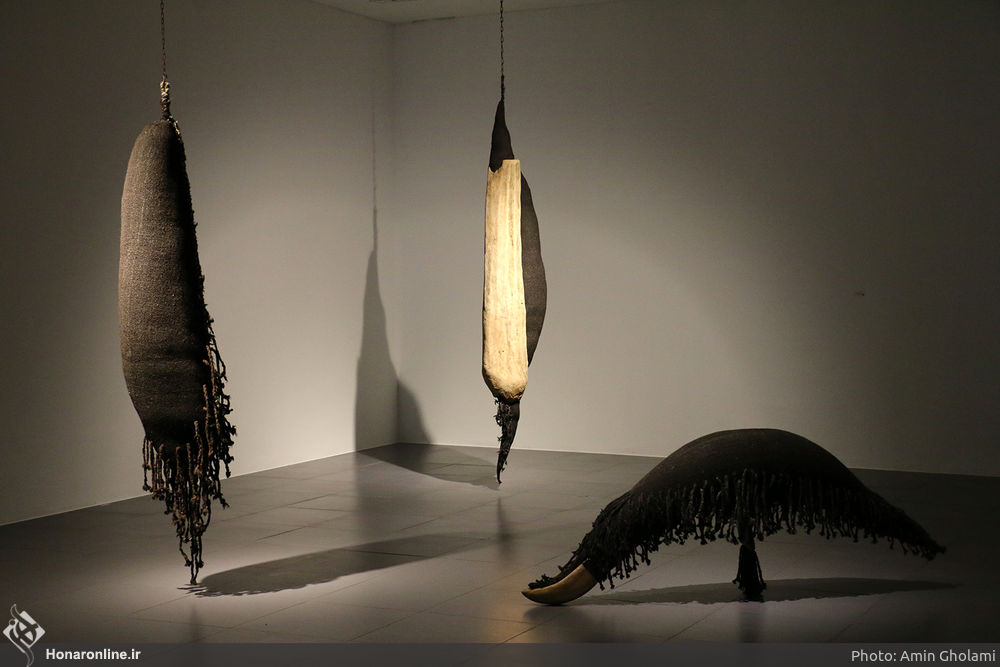The exhibition of Seyyed Ali Seyyed Alikhani’s works, known as “Vargah”, is underway in Tehran’s Iranshahr Gallery.
Nomadic life in Iran has survived many ups and downs throughout the centuries, and people from different tribes have always been living their lives through the use of their available materials.
Black tents are the most prominent feature of nomadic life, and they are made using animals’ wool. All the stages of shearing, yarn spinning and tent weaving are done by the people of tribe.
Seyyed Alikhani has also directly used the black tent’s material and created special sculptures by combining other materials. These works are made in different shapes using wool, wood, and horns.
He did not intend to achieve different forms of composition in a known format. Instead he has created an abstract form or forms derived from the appliances of nomadic life.
Another feature of these works that has made them unique is their being handmade.
Watching these sculptures, the audience understands the history and culture of their background and understands the intricate spirit of them.
This exhibition runs through May 13 at Iranshahr Gallery in central Tehran.
What follows are Honar Online’s photos of the exhibition:
